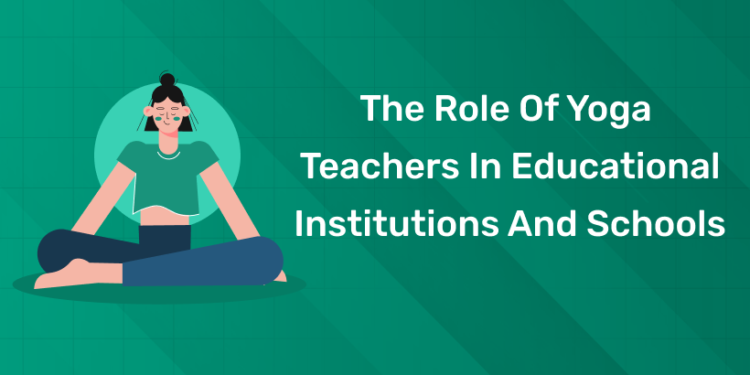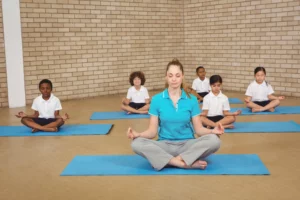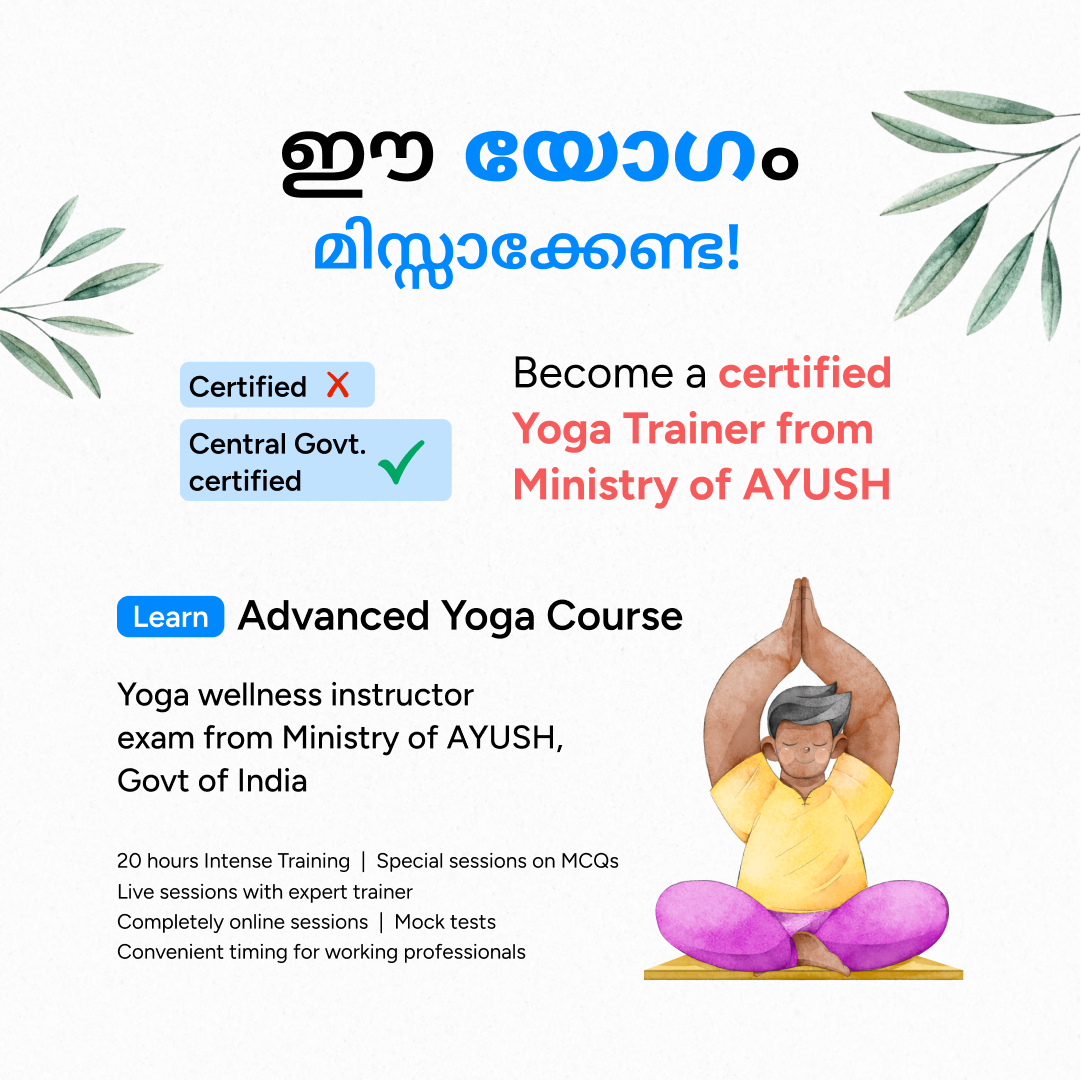Table of Contents
Often we get to see yoga teachers in educational institutions and schools. However, the real question is, why are they even there? What roles do they exhibit? This blog outlines the role of yoga teachers in educational institutions and schools.
Introduction
The faculty in an educational institution or school mostly consists of academic teachers and physical education instructors. At the same time, another member is present in the faculty as well. In this scenario, one might even consider them to be the ‘black sheep’. So why do yoga teachers or yoga instructors seem out of place in educational institutions and schools?
Whether you are pursuing yoga courses, have already completed yoga teacher training courses, or are simply interested in understanding the role of yoga teachers in schools, you have come to the correct place. Read on to understand with a detailed analysis on the topic.
Want to become a Yoga Instructor? Join Entri’s Yoga TTC to realise your dreams!
Why Yoga is Essential in Schools and Educational Institutions
1: Which of these is the primary goal of yoga practice?
Yoga, an ancient practice believed to be founded and exercised by the prehistoric sages in India, has seen exponential growth all over the globe. The ancient practice has been adopted to peak levels, such as being implemented as a core and mandatory subject in educational institutions and schools. Having said that, why is this trend being imposed? What makes yoga essential in school?
The benefits of yoga are summarised below, showcasing its essentiality in schools.
-
Self-esteem
Yoga helps students to understand and develop their bodies. By becoming aware of their bodies and their capabilities, they are encouraged to build and maintain a positive relationship with their bodies, which in turn allows them to accept themselves and their characteristics. Learning and developing yoga postures helps in building self-confidence and a positive self-image.
-
Healthy habits
Yoga techniques like breathing exercises help to understand the body and mind as well as what is good and bad for one’s own body. This helps in eating healthy along with having a sufficient, good night’s sleep.
-
Social Development
Yoga courses and classes are usually done in groups, resulting in the development of peer working capacity and sometimes peer leading. Students get to interact with like-minded ‘yogis’ and thus share their healthy habits as well.
-
Stress-buster
Yoga’s power is attributed to attaining a calm and composed personality and composure during stressful and demanding situations. This process will definitely be beneficial in the long run, especially when it comes to exam stress.
-
Life Skills
Regular yoga classes help in creating a sense of discipline and consistency among students. These are essential life skills that can be applied in various situations. Self-awareness helps in understanding one’s abilities, and thus they can avail career planning counselling from the school itself.
Become a Certified Yoga Instructor
Yoga Teacher Training Course by Entri App: Master authentic yoga techniques, earn certification, and build a successful career as a professional yoga instructor.
Join Now!Responsibilities of a Yoga Teacher in Schools
In this modern world, the need for yoga has increased substantially as it is perceived to be a catalyst for maintaining the balance between the mind and body. This proportionally increases the value of the yoga teacher or trainer. This is due to the fact that they are the ones who guide the students to achieve balance in their lives.
The responsibilities of a yoga teacher in schools are as follows:
-
Teach Yoga Poses
Demonstrate yoga poses and techniques.
-
Assist the students
Help students deepen their stretches and achieve proper alignment.
-
Create a safe space.
Create a safe space where students can learn at their own pace.
-
Communicate
Use verbal cues to guide students through the class.
-
Motivate and assess
Encourage students with words of approval along with a visual assessment of their level of practice.
-
Plan lessons
Plan lessons based on the concepts of their understanding and training.
-
Offer recommendations
Offer training recommendations to develop their level in yoga.
Want to read more on Yoga TTC? Click here to read our detailed blogs on the course and profession!
The Impact of Yoga on Academic Performance
There’s no denying the fact that school education and its academic performance evaluation have changed and become more demanding and crucial. There are instances where schoolkids might be undergoing stress in various forms. Yoga is cemented as being a catalyst for individual development due to its combining of both the mind and the body as it is. However, there is more than just what meets the eye! Yoga has proved to be a stress-buster and a booster for academic performance.
Practicing yoga can:
-
Reduce stress and anxiety
Yoga lowers cortisol levels, which are accountable for stress and anxiety. Lower cortisol levels result in a calmer mind and thus increase concentration and memory power.
-
Enhance Concentration and Memory
Yoga increases the gray matter in the brain, especially in the areas of learning and memory. This improves cognitive functions that help students to retain the information.
-
Improve physical health
Regular yoga practice helps in flexibility, strength, and overall physical health. A healthy body supports a healthy mind, contributing to better focus and positivity.
-
Promote better sleep quality
Sleep quality is one of the major factors for memory consolidation and learning. Yoga improves sleep quality and patterns, resulting in fresh mornings for the students.
A study conducted by the International Journal of Yoga states that “the results show that the students who practiced yoga performed better in academics. The study further shows that low-stress students performed better than high-stress students, meaning thereby that stress affects the students’ performance.” [1] These further solidify the fact that yoga actually impacts academics.
Conclusion
Yoga has a vast amount of energy that can transform our minds and bodies. Yoga teachers or instructors have the ability to plant the seeds of a healthy habit, which includes yoga, in the young minds of our generation. By now, the sceptical questions that were present at the beginning of this blog have been answered to the fullest. Having said that, it would be safe to say that the role of yoga teachers in educational institutions and schools is similar to that of general teachers.
If you want to try your luck and be part of something virtuous, enrol in Entri’s Yoga TTC Course now!
Become a Certified Yoga Instructor
Yoga Teacher Training Course by Entri App: Master authentic yoga techniques, earn certification, and build a successful career as a professional yoga instructor.
Join Now!References
- Effect of yoga on academic performance in relation to stress, The International Journal of Yoga (https://pmc.ncbi.nlm.nih.gov/articles/PMC3017967/#:~:text=The%20results%20show%20that%20the,stress%20affects%20the%20students’%20performance)
Become a Certified Yoga Instructor
Yoga Teacher Training Course by Entri App: Master authentic yoga techniques, earn certification, and build a successful career as a professional yoga instructor.
Join Now!Frequently Asked Questions
What roles do yoga teachers have in educational institutions and schools?
The responsibilities of a yoga teacher in schools are as follows:
- Teach Yoga Poses
Demonstrate yoga poses and techniques.
- Assist the students
Help students deepen their stretches and achieve proper alignment.
- Create a safe space
Create a safe space where students can learn at their own pace.
- Communicate
Use verbal cues to guide students through the class.
- Motivate and assess
Encourage students with words of approval along with visual assessment of their level of practice.
- Plan lessons
Plan lessons based on the concepts of their understanding and training.
- Offer recommendations
Offer training recommendations to develop their level in yoga.
What all do you need to know to become a yoga teacher?
First and foremost, you need to enrol and complete a yoga TTC Certification, that will help you expose yourself into the field. Entri’s Yoga TTC Course offers you with top notch curriculum and international certification to kickstart your career.

























